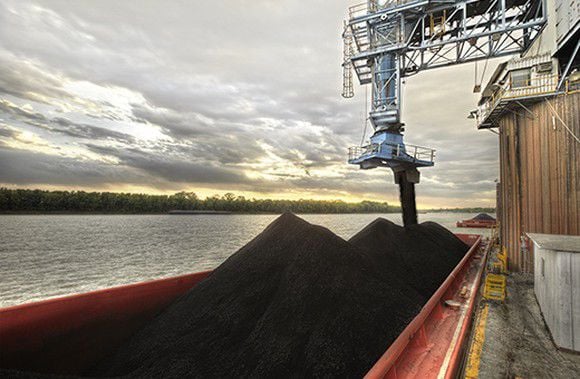The state’s program for reclaiming abandoned coal mines has long been plagued with problems, but state and federal officials have done little to prepare for this reckoning.
West Virginia’s fund to clean up abandoned coal mines is in such dire shape that it threatens to stick taxpayers with hundreds of millions — perhaps even billions — of dollars in cleanup costs. And yet, little is being done to turn things around.
The bankruptcy of just one significant mining company could wipe out the fund, according to the state’s top regulatory official. And auditors for the Republican-controlled Legislature said at least five major companies were “at risk” of dumping cleanup costs on the state.
At $15 million, the state’s fund for restoring land is at its lowest level in more than 20 years. The program’s latest published actuarial report in 2022 warned that a related water cleanup trust fund will lose half its balance over the next 10 years.
These are costs the coal industry was supposed to cover. Unreclaimed mine sites can not only damage the environment but also endanger coalfield residents who live nearby. Coal waste dams sometimes leak or break, flooding downstream communities. Cliffs of rock and debris left behind after mining can collapse. Runoff that isn’t contained or treated often poisons fish or water supplies.
This crisis is emerging in other coal states like Kentucky, Ohio, Pennsylvania and Virginia, which have also had problems with their mine reclamation programs. But West Virginia offers perhaps the clearest and most troubling portrait of what could happen as the coal industry’s decline continues.
The state fund’s problems have been depicted as a recent phenomenon tied to a wave of coal company bankruptcies over the past decade. But a detailed review by Mountain State Spotlight and ProPublica reveals that they are far from that.
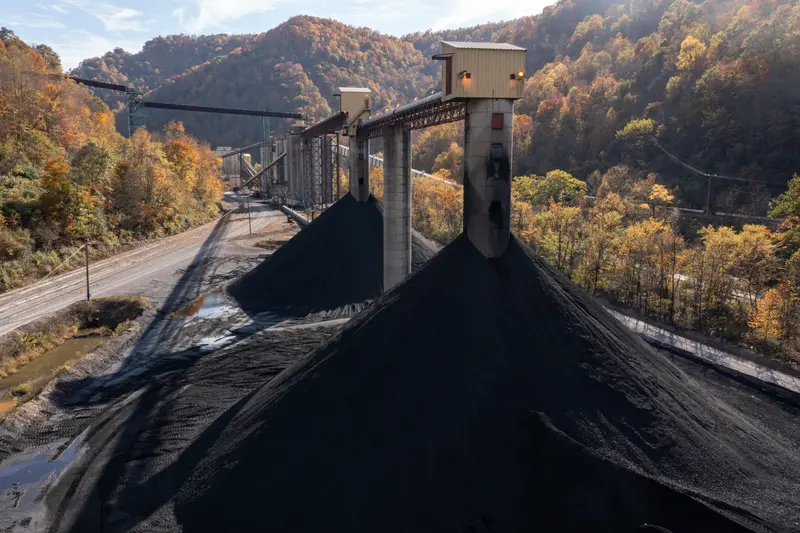
State and federal officials have been warned repeatedly over the past 40 years that this reckoning was coming but have failed to prepare for it. Again and again, the review found, auditors questioned whether West Virginia’s reclamation program would have adequate funding.
But neither state lawmakers nor regulators required coal companies to have enough reclamation bonds as insurance should they go belly up. Nor did legislators raise the tax on coal production enough to make up the difference. Federal officials in both Republican and Democratic administrations who were supposed to oversee the state program cautioned there were problems but didn’t step in.
Just two years ago, West Virginia’s legislative leaders ignored recommendations from their own auditors to bolster the fund. Instead, they called for an $8 billion bailout from the federal government. And last month, Gov. Jim Justice’s administration removed a key critic from an advisory panel that monitors the fund, just as the group was about to review a new study on the fund’s future health. The governor’s office did not respond to a request for comment.
Environmental groups have pleaded with the Biden administration to focus on the reclamation crisis in the coalfields. But nearly three years into his term, President Joseph Biden still hasn’t nominated a director to lead the agency charged with enforcing the mining reclamation law.
As a result, a close examination of the fund’s finances and the state of the coal industry shows, the problem is no longer something out in the future.
“The system never fully worked,” said Peter Morgan, a Sierra Club lawyer who has advocated reforming the system for years. “It limped along for a while, but it is completely broken today.”
In response to questions, Interior Department spokesperson Giovanni Rocco said the agency’s Office of Surface Mining Reclamation and Enforcement regularly reviews state reclamation programs and in 2021 told West Virginia officials to better track cleanup liabilities. Rocco referred OSMRE nomination questions to the White House, which did not respond.
West Virginia Department of Environmental Protection spokesperson Terry Fletcher said in an email that the agency will continue to work “to improve the overall financial viability” of the program. The agency has about $1 billion that could fund reclamation projects, including available coal company bonds. But environmental groups predict the cost will be much more than that.
One of the firms that could tip the fund over the edge is Lexington Coal Company, which grew rapidly in recent years by cobbling together permits held by mining firms that went bankrupt.
In 2017, Alpha Natural Resources, once the nation’s third largest coal producer, paid Lexington, then a little-known company, hundreds of millions of dollars to take permits with massive reclamation problems off its balance sheet. Lexington promised the move would “accelerate reclamation” within five years.
Today, Lexington holds nearly 200 permits in West Virginia, making it one of the state’s largest coal companies on paper. But there’s little evidence that the company is producing much coal — and lots of evidence that it’s struggling to do the reclamation work it’s currently obligated to do.
Lexington officials did not respond to questions.
One of its operations, the Twilight Mountaintop Removal Mine, was once among the largest in the state. Over its quarter-century life, the main mine at the Twilight complex about an hour south of Charleston produced more than 60 million tons of coal to provide electricity and help make steel. Last year, it produced less than 200,000 tons.
Left behind is the rock and dirt that mine operators shoved into valleys, burying streams. Remnants of coal silos and preparation plants have been overtaken by brush. Most dramatically — and only fully grasped from an aerial view — are massive moonscapes of gray and brown rubble where the mountains were once lush and green.
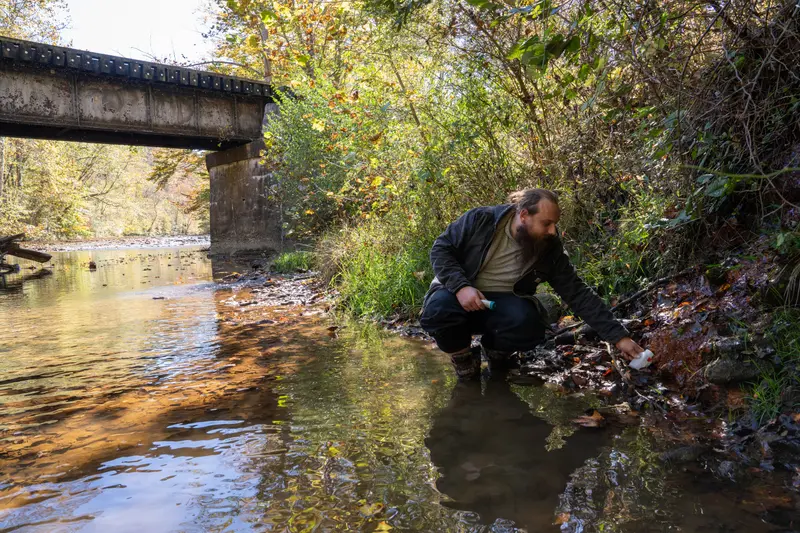
“It’s a post-apocalyptic nightmare,” said Vernon Haltom, a leader of Coal River Mountain Watch, a grassroots group fighting the coal industry. “It looks like a vast, sparse wasteland, like after a nuclear war.”
Ignored Warnings
From the earliest days of coal mining in the United States, mining operators took what they could from the hills and hollows and moved on to the next mine, often leaving a mess for residents to live with.
President Jimmy Carter’s signing of the Surface Mining Control and Reclamation Act of 1977 was intended to stop that. The law required coal companies to clean up the damage and restore the hills and creeks, a process known as reclamation.
And there was supposed to be a backup funding plan. States were required to make mine operators post bonds as a type of insurance to cover reclamation costs if the companies went bankrupt. Bonds were to be set at amounts sufficient to reclaim the mined land and treat polluted water.
But Congress also created an industry-friendly alternative. Coal companies could post smaller bonds if they paid a production tax into a state-run fund that regulators could use to reclaim abandoned mines. Under federal law, these pooled systems were required to be as effective at cleaning up mines as full-cost bonding programs. Lawmakers charged OSMRE with ensuring the state programs worked.
In West Virginia, this system proved to be inadequate from the start, according to a review by Mountain State Spotlight and ProPublica. OSMRE was initially supportive when the state proposed a bond pool in 1980 but also asked for more proof that it would provide sufficient funding to cover long-term cleanup costs.
Two years later, a preliminary study warned that reclamation costs were expected to exceed bond coverage. Though state officials were optimistic the coal production tax money would make up the difference, the actuarial study cautioned that “there is a great deal more to be done before this study should be considered conclusive.”
The questions raised were never answered. But the following year, the Reagan administration approved West Virginia’s pooled system anyway, deciding that it “appears to be basically sound.”
Despite the administration’s confidence, West Virginia’s financial problems became apparent by the mid-1980s. One congressional audit documented delays in cleaning up abandoned mines. Another warned that the reclamation fund was millions of dollars short. Another that the program didn’t account for the escalating costs of treating contaminated streams.
Both the Bush and Clinton administrations warned the state that its program needed more money. But West Virginia officials again did little.
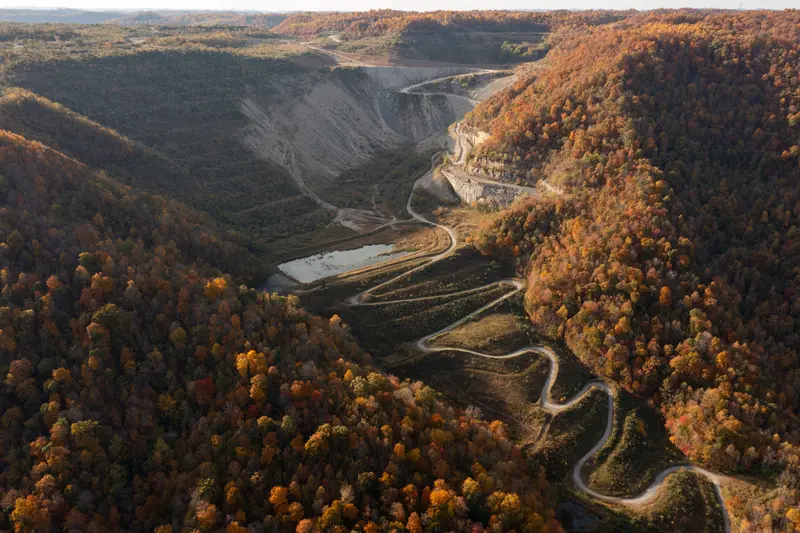
“Everyone knew it was a sham,” said Pat McGinley, a longtime West Virginia University environmental law professor. “State and federal regulators and politicians winked and nodded while the law was violated for more than four decades.”
Then, in 2001, environmental groups thought they might be looking at a breakthrough. They’d filed a lawsuit to reform West Virginia’s reclamation program, and it had landed before Chief U.S. District Judge Charles Haden II. Though considered a conservative judge, Haden had shown no patience for coal industry abuses or lax regulatory attitudes.
Things had also changed in the West Virginia governor’s office. In 2000, Democratic former U.S. Rep. Bob Wise defeated a Republican onetime coal company executive. Wise promised to strictly enforce environmental protection laws in the mining industry and appointed a former federal prosecutor known for taking on coal companies to run his enforcement agency.
The agency proposed increasing required bond amounts and the coal production tax rate. But lawmakers weren’t interested, and the legislative package died.
A few months later, Haden issued a blistering opinion in the federal lawsuit, decrying the decadeslong inaction as “a climate of lawlessness, which creates a pervasive impression that continued disregard for federal law and statutory requirements goes unpunished, or possibly unnoticed.”
The judge, however, deferred to OSMRE, saying agency experts were better suited to prescribe how the state’s reclamation woes should be addressed.
Partly in response, OSMRE in 2002 started drafting a new federal rule to ensure enough money was set aside for expensive long-term treatment of water pollution. But agency officials delayed publishing the proposed rule a half-dozen times. Then they dropped the idea without explanation. The agency’s spokesperson said that action occurred too long ago, and under a previous administration, for him to explain without more research.
West Virginia officials did slightly increase the special reclamation tax and created a task force of industry, government and environmental players to monitor the fund and recommend fixes.
But, as McGinley recounted in a law review article, those changes were a modest compromise.
“The final product of the closeted consultations with industry representatives,” he wrote, “was a DEP-backed bill intended to marginally satisfy OSM, while minimizing, as much as possible, financial burdens on coal companies.”
The Breaking Point
By the 2010s, as coal faced growing competition from natural gas and renewable energy, the long-predicted crisis began to arrive.
Since 2012, more than 60 coal companies, including some of the biggest in the country, have gone bankrupt. That left thousands of acres abandoned or shuffled to other companies. Many more companies are teetering on the financial brink.
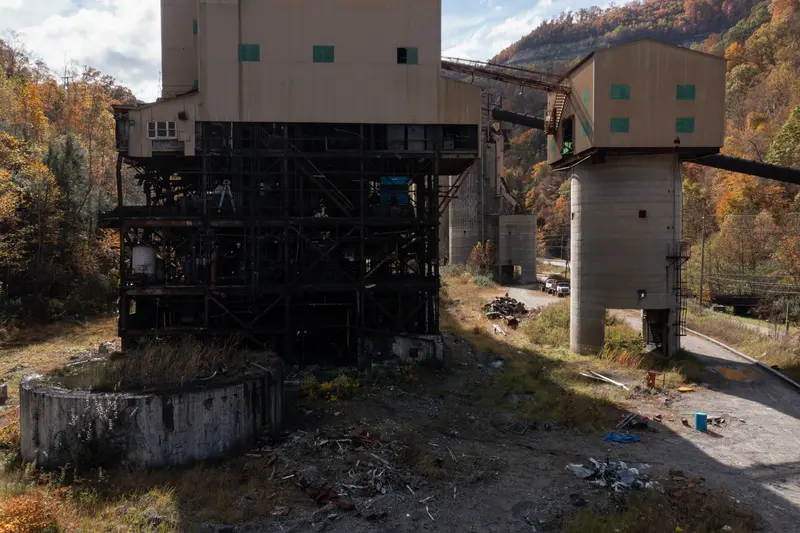
By 2021, even the auditors working for the Legislature were taking aim at the crisis. The reclamation bonds carried by coal companies would cover less than 10% of cleanup costs, their audit reported. And the state had enough money on hand for less than 40% of the sites that would need to be cleaned up over the next 20 years.
One at-risk coal company, ERP Environmental Fund, was in such bad shape, the auditors noted, that West Virginia regulators convinced a local judge to put the company into receivership, a move that avoided bankruptcy but left the future of its unreclaimed sites unclear. The head of the state environmental agency cautioned in court filings in 2020 that ERP’s bonds were nowhere near enough to cover its reclamation costs, warning the firm’s bankruptcy “would overwhelm” the state’s cleanup fund “both financially and administratively.”
An attorney for ERP didn’t respond to a call for this story. The firm didn’t object to the state’s receivership motion, and the receiver said in an email that he’s working to sell the firm’s assets so they can be reclaimed.
The legislative auditors suggested concrete steps to shore up the state’s fund: Lawmakers could increase the bond amounts, or regulators could force companies to begin cleanups more quickly after a mine stops producing coal.
But instead of following their recommendations, Senate President Craig Blair, a Republican from the Eastern Panhandle, called for a federal bailout, and state lawmakers passed a resolution asking for $8 billion for mine reclamation projects. Blair said the government owed it to West Virginia to pay for the cleanups, blaming coal’s decline on federal regulations.
So far, there hasn’t been much movement on a federal bailout. A proposal in Congress last year would have provided $385 million a year for a decade in general tax dollars to reclaim new mines that coal companies, bonds and reclamation funds were supposed to cover. But the legislation went nowhere.
A spokesperson for Blair said the senator has “demonstrated his commitment to solving this issue.” Blair’s office cited his legislation creating a new state-funded insurance company for the mining industry. That firm doesn’t address the reclamation fund’s financial problems, but it does give coal operators another option for buying cleanup bonds.
West Virginia lawmakers will have another chance to address the problem when their session opens in January. Delegate Evan Hansen, a Democrat from Morgantown, said he will introduce a bill to increase required bond amounts — a measure he unsuccessfully proposed two years ago and that environmental groups have been urging for decades.
It could be a tough sell, given the Republican supermajority at the statehouse. Both Blair and West Virginia House Speaker Roger Hanshaw said last month that it was too early to discuss any potential plans for the session.
Recent political events also suggest that’s the case. Two days before a key meeting in November, the Justice administration removed a longtime critic from the advisory council that monitors the state’s reclamation fund.
John Morgan, a mining engineer who for 20 years represented environmental groups on the council, had consistently used his spot to push for a fuller accounting of the risks posed by the monumental changes in the coal industry. Morgan was planning to raise concerns about two issues: the large number of permits with no production and the risks that relying on a smaller number of mines poses for the production tax that provides much of the program’s revenue.
On the agenda was reviewing a draft of an actuarial study, obtained by Mountain State Spotlight and ProPublica, that shows a surprisingly large improvement in the fund’s financial position.
The most recent actuarial report, published in 2022, projected the fund’s liabilities had grown to $565 million. But according to the new draft, the liabilities dropped by $115 million as of June, and the reclamation fund will remain solvent through 2043. Study author Daniel Lupton of the firm Taylor & Mulder attributed the change to improvements in how the state estimates liabilities related to building water pollution treatment operations.
“The projection’s actually great,” Rob Rice, a WVDEP deputy director, recently told Congress.
Morgan says such estimates are unrealistic. “I get very worked up about the fund because everyone is ignoring reality,” he said. “I don’t think anyone can say that it’s solvent.”
Environmental groups say even the 2022 liability figure was an underestimate. An Appalachian Voices analysis warned that West Virginia’s price tag could ultimately be close to $3.6 billion, with only about a third funded by bonds.
Lupton acknowledged that the concerns Morgan had been raising aren’t fully addressed in his firm’s study and said state officials haven’t provided adequate data to do so.
“No matter how good my model is, there are some elements to what’s going on in the industry that are related to politics and human decision making that will always be beyond the reach of my numerical modeling,” Lupton told Mountain State Spotlight and ProPublica in an email.
Without such data, environmental groups have pushed the Interior Department to at least conduct a financial “stress test” of major mining bond providers and state programs.
“Because reclamation burdens are so high, and available bonds so inadequate,” Appalachian Voices and other groups wrote last month, “regulators have every incentive to paper over the problem and avoid forcing the issue.”
A Mine on the Edge
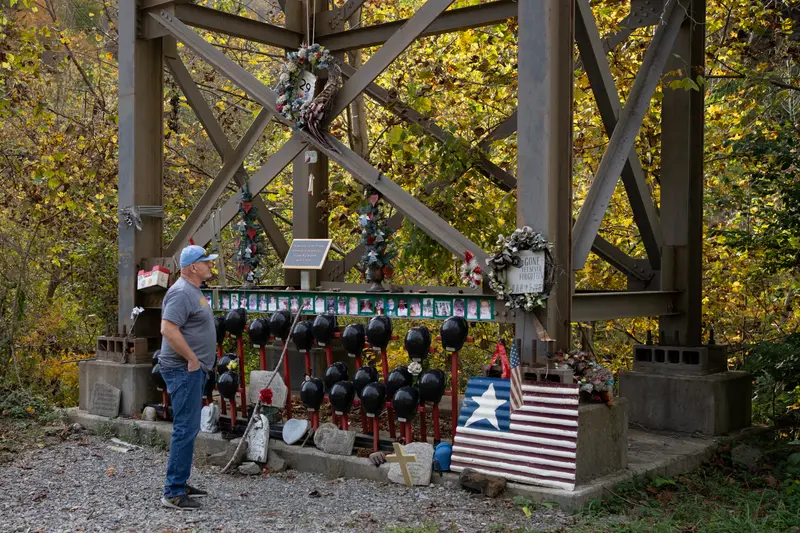
One critical piece of data that West Virginia doesn’t collect is a mine’s expected reclamation costs. Pressed by an environmental group lawsuit, federal regulators ordered the state to track such liabilities in 2021, noting that the state’s program “contains the same or similar deficiencies” as federal reviews found two decades earlier.
But so far, the state’s database includes only the number of acres needing restoration. Fletcher from WVDEP said the state can compare that to average costs from past reclamation projects “as needed” to calculate liabilities.
Because the state doesn’t have specific mine-by-mine estimates, though, critics say it has no way of assessing whether a company’s bonds will cover a cleanup or what the burden on the state’s fund might ultimately be. For instance, while the state audit report said that Lexington’s permits have $167 million in reclamation bonds, there is no information about the company’s liabilities.
A look at Lexington’s recent struggles reveals why that lack of information matters.
With nearly 200 permits, Lexington commands a vast amount of mining land in West Virginia. But with just 135 employees statewide, the company appears to be on the financial edge. If it’s true, as auditors’ estimate, that bonds typically cover only 10% of reclamation costs, the numbers show a Lexington default could easily drain the reclamation fund.
Lexington is managed by Jeremy Hoops, and court records show the firm is owned by a Hoops family trust. In emails disclosed in court, family patriarch Jeff Hoops said Lexington was formed in 2004 out of the bankruptcy of another firm to take that company’s “bad assets.” Jeff Hoops also founded Blackjewel, whose 2019 bankruptcy left behind dozens of unreclaimed mines in eastern Kentucky, as Mountain State Spotlight and ProPublica outlined this spring.
In an email, Jeff Hoops declined comment, saying he has “no involvement” with Lexington. Earlier this year, he said that creditors forced Blackjewel into bankruptcy and that the company responded promptly to environmental violations.
Now Lexington seems to be in trouble. State environmental records and federal court filings document that Lexington doesn’t appear to have the resources to complete its reclamation work. And efforts by regulators and courts to intervene have been largely ineffective.
In 2021, a WVDEP inspector cited Lexington for failing to remove a highwall, a cliff of rock and debris leftover after mining, at its Twilight complex. The WVDEP inspector considered the violation serious enough to require correction by the following day. That never happened. In the two years since, the agency has pushed back the deadline to correct the problem 25 times, accepting Lexington’s explanation that weather conditions hampered its work.
In July, federal inspectors visited the site after citizens complained about WVDEP’s handling of the situation and said that the agency shouldn’t have allowed that as an excuse for two years. Those OSMRE inspectors noted that Lexington had stopped reclamation work at the site for three months in late 2022 and since then had moved one piece of equipment doing cleanup at Twilight back and forth to another mine.
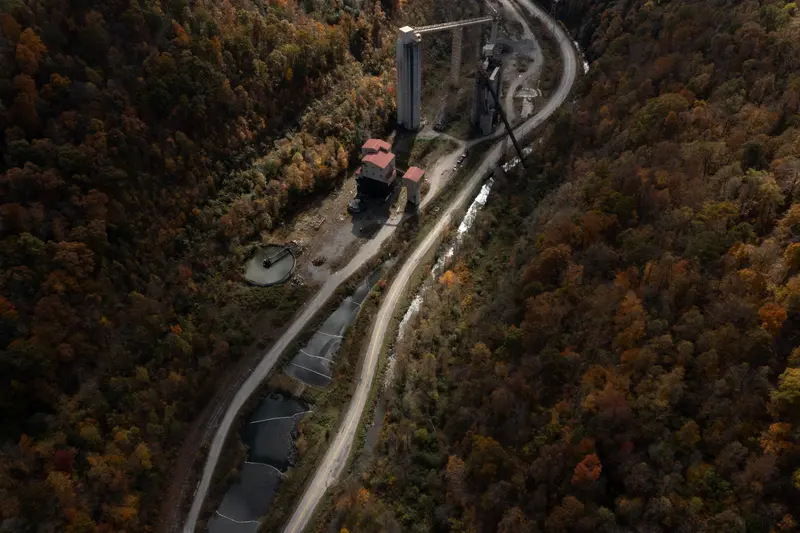
In 2022, three sections of hillside at the Twilight mine collapsed, sending mud and debris into a small stream. Regulators ordered the creek cleaned and the hillsides stabilized. The mess still hadn’t been cleaned up six months later, prompting West Virginia officials to suspend the mine’s permit. But the state and the company quickly settled. The stream was cleaned, but other violations continued.
Lexington’s problems, and a lack of tough regulation, are also visible at other mines it owns. A federal judge has grown so tired of Lexington’s delays in addressing illegal levels of toxic selenium and other pollutants in the runoff from two mines in Mingo County that last year he held the firm in contempt of court.
In court filings, Lexington has said it is working diligently and making progress toward compliance. But on Nov. 17, a federal judge ruled that Lexington “is moving at a sluggish pace, with no sense of urgency or diligence.” He fined Lexington $50,000, the latest in a series of court orders related to payments or deadlines the company missed to clean up its mines.
“They are just hanging by a thread,” said Michael Becher, an attorney for the citizen groups.








